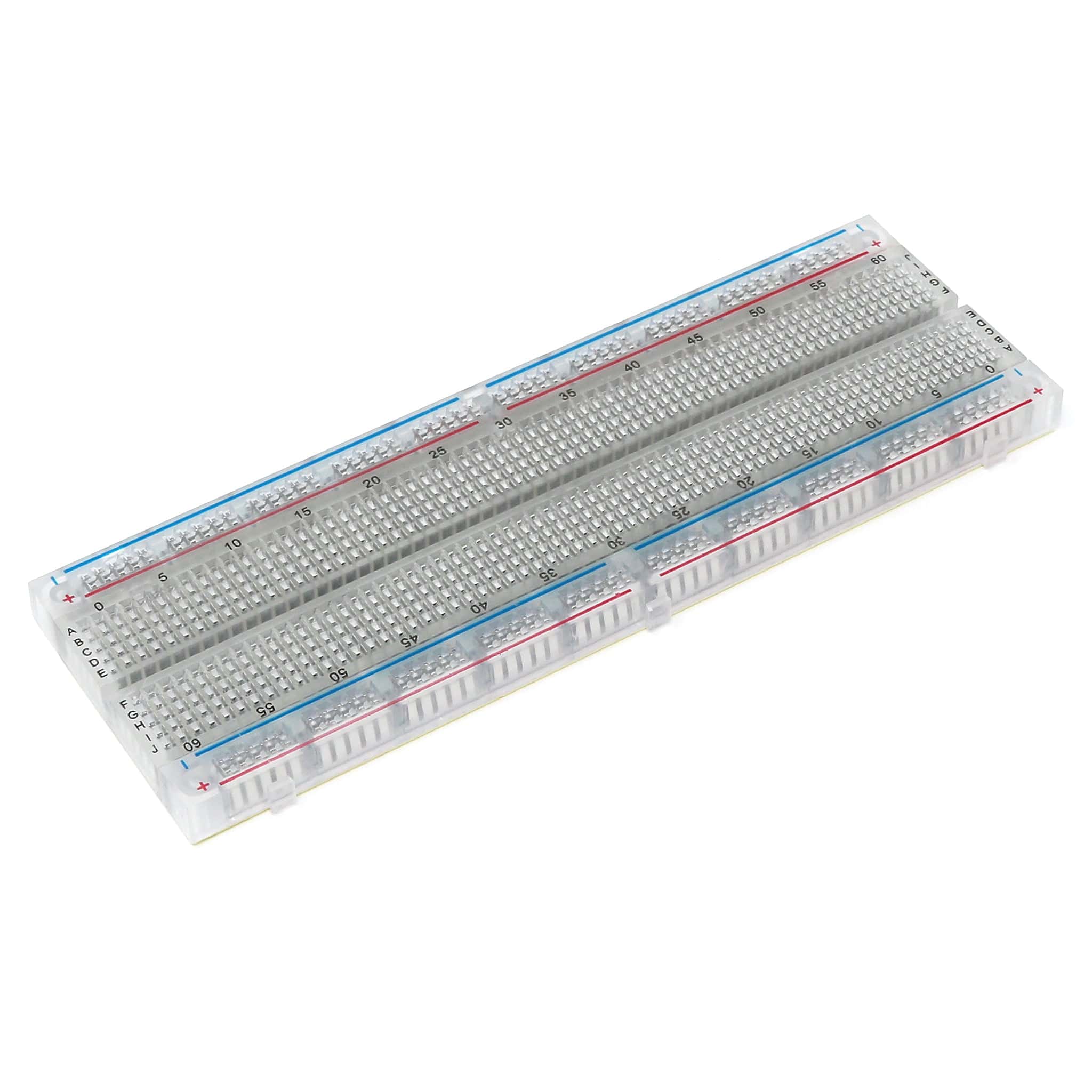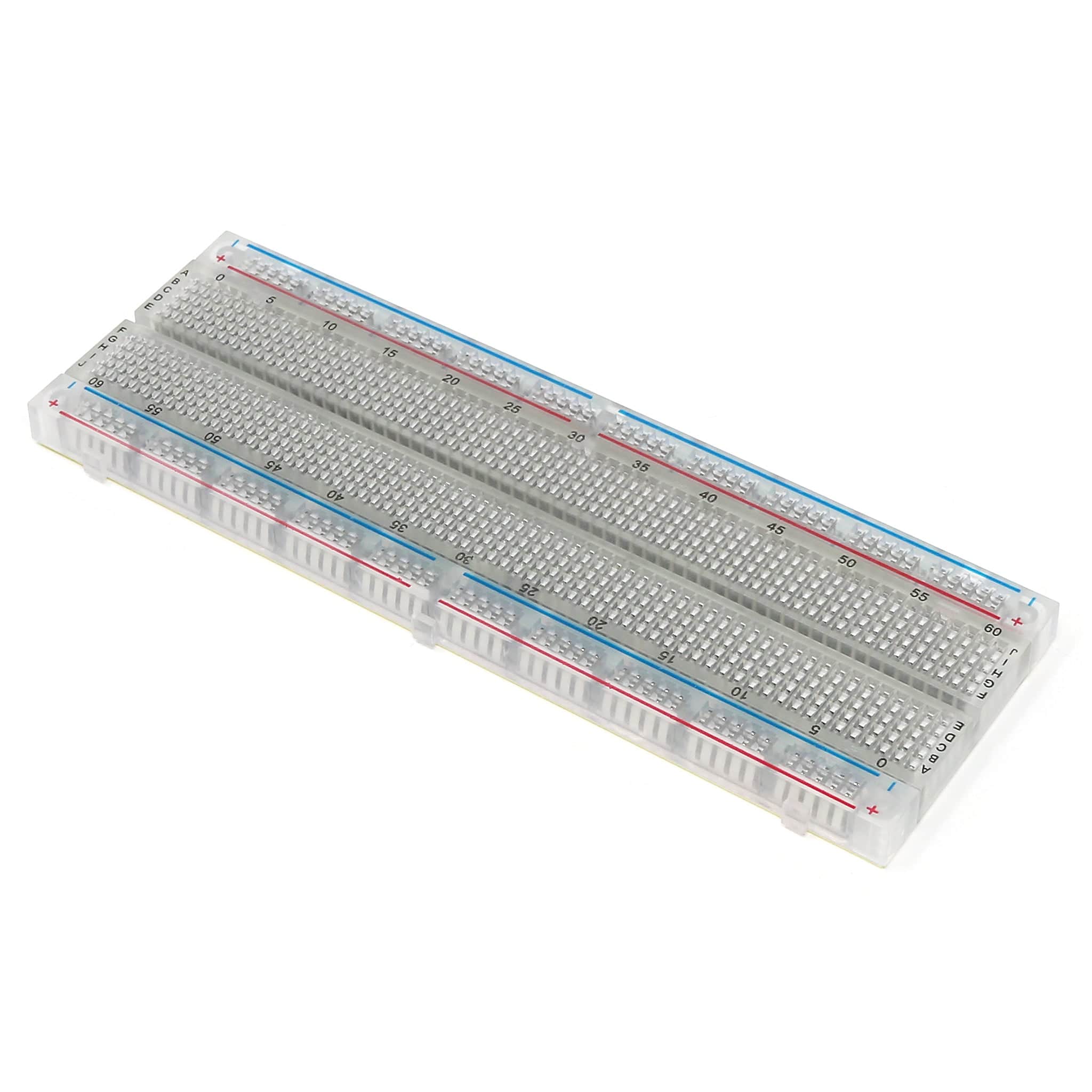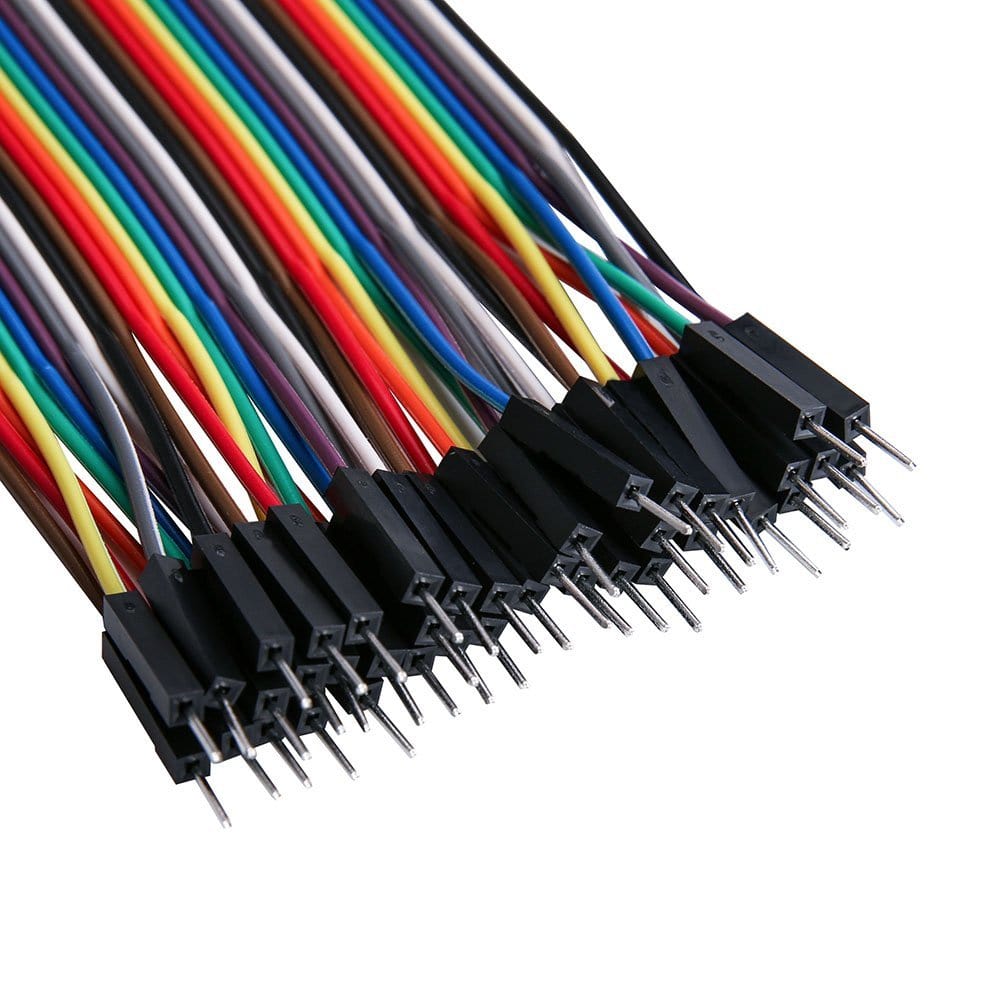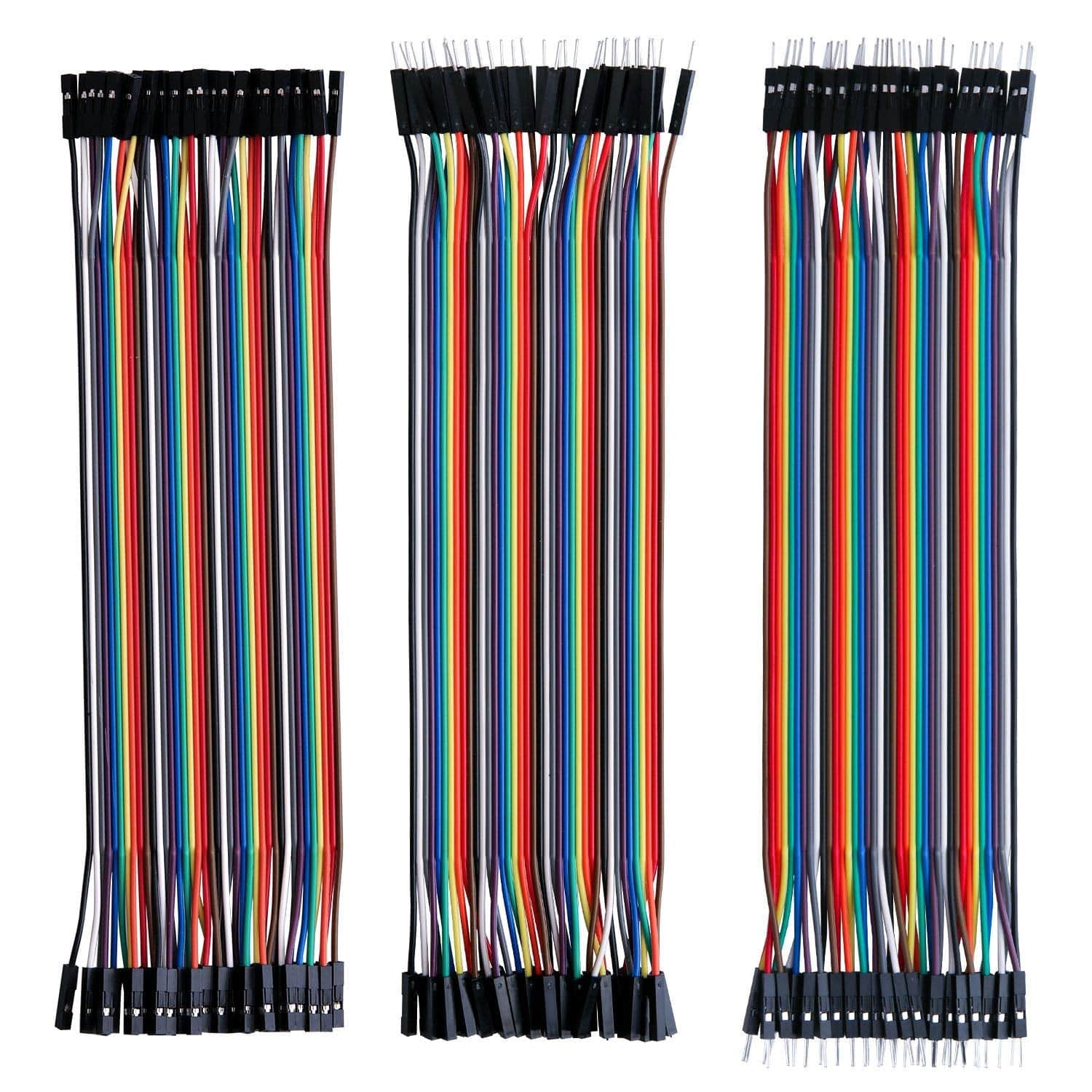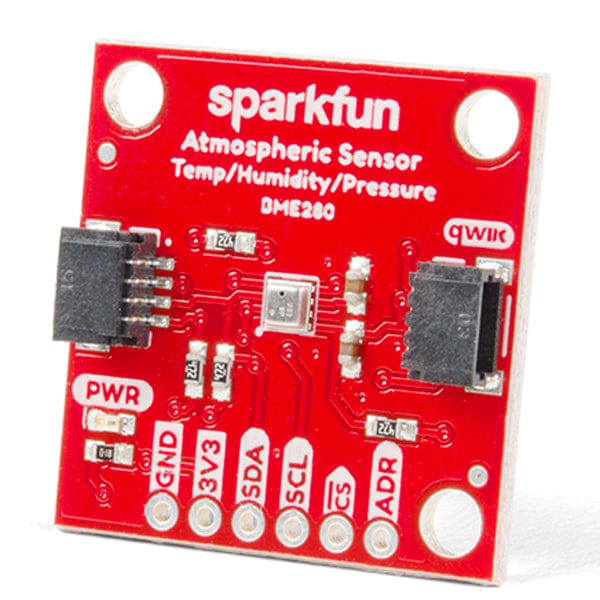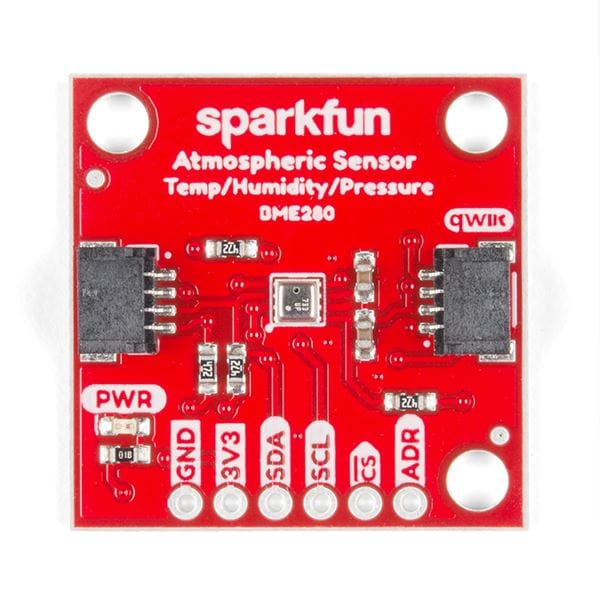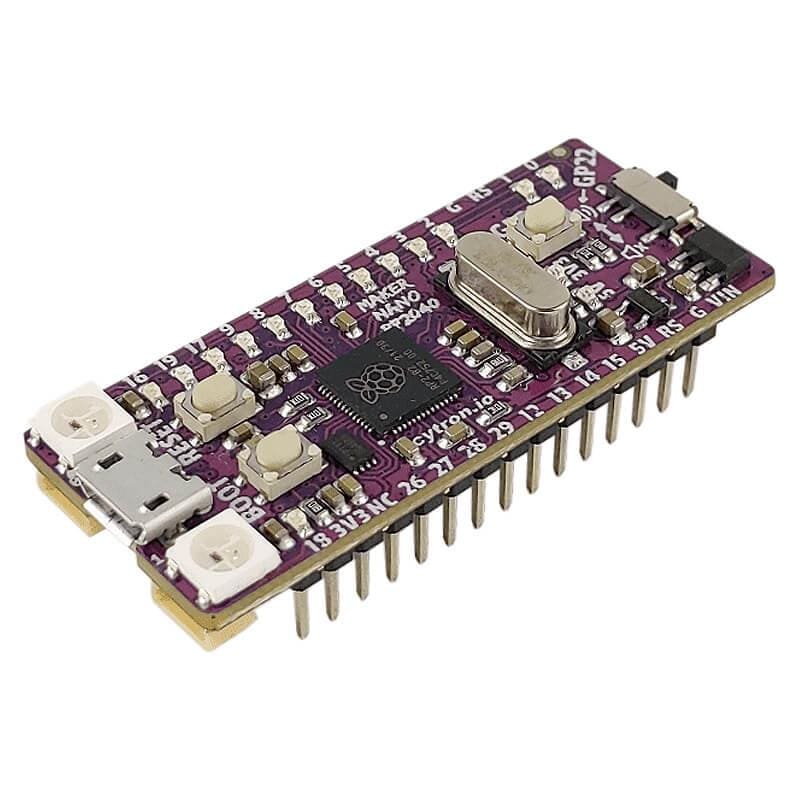
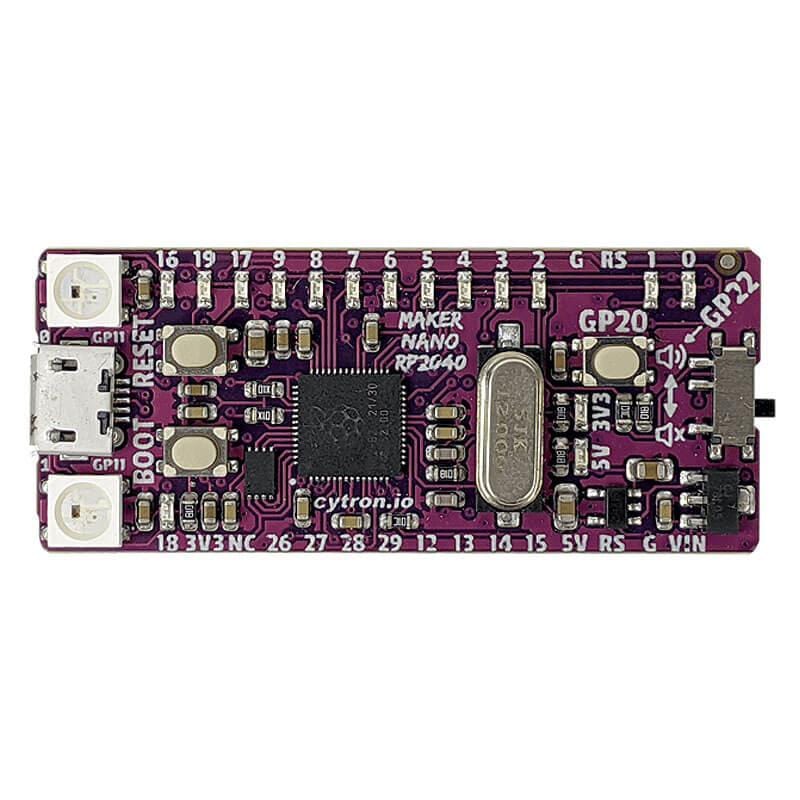
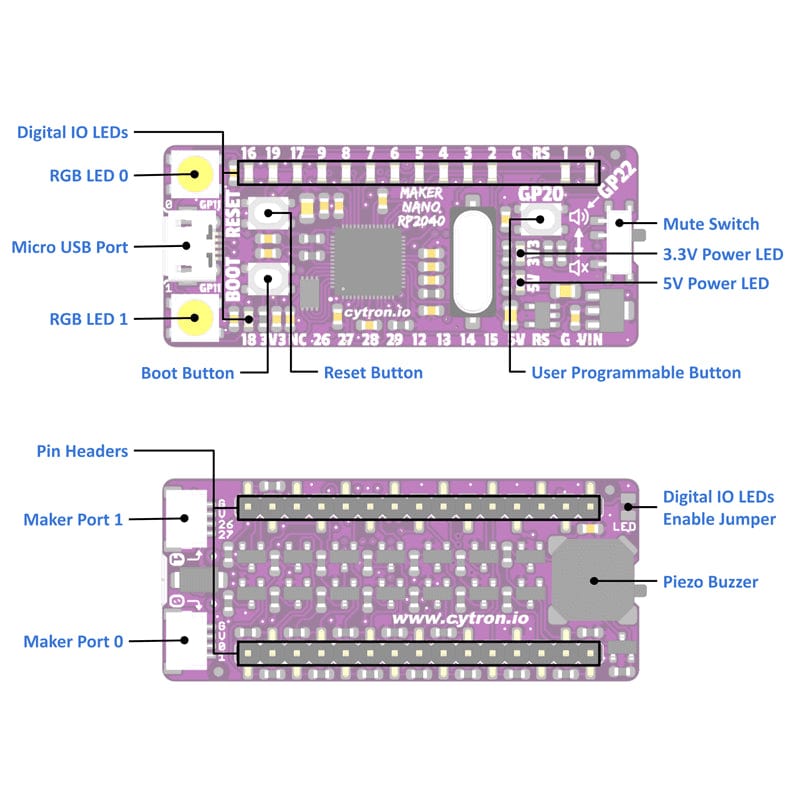
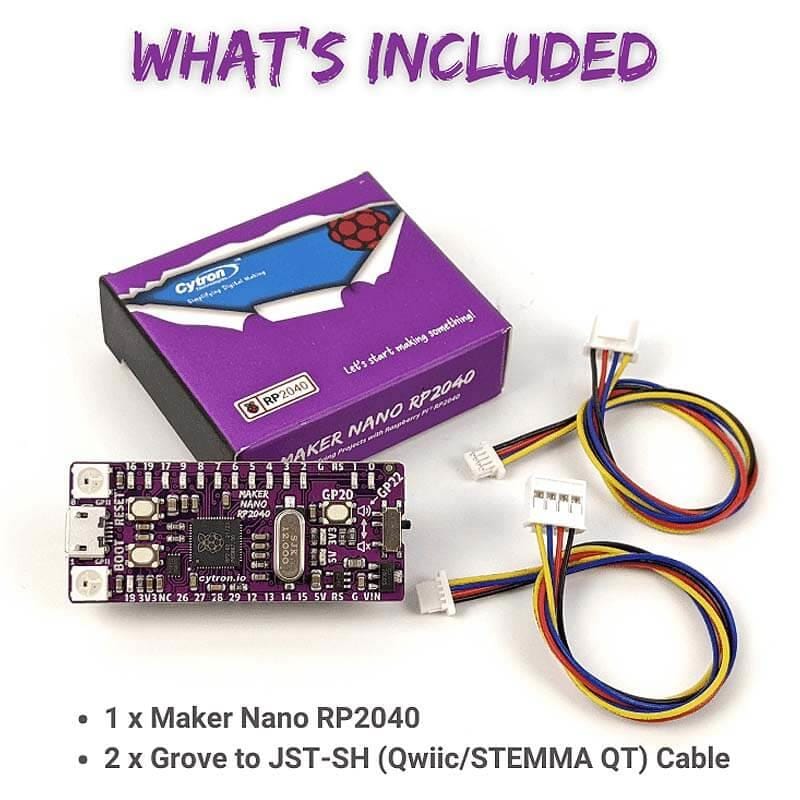
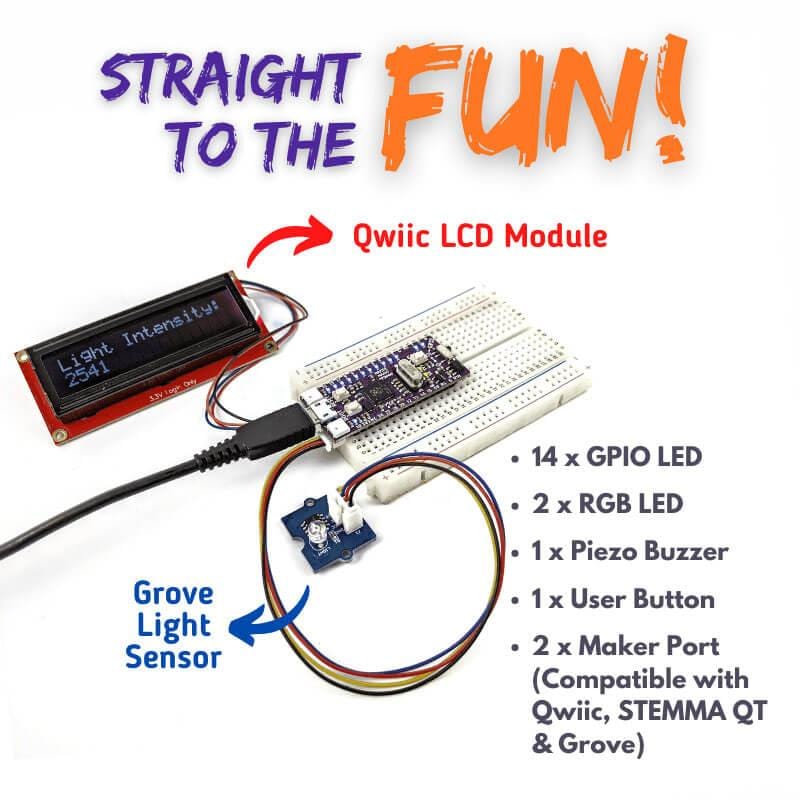
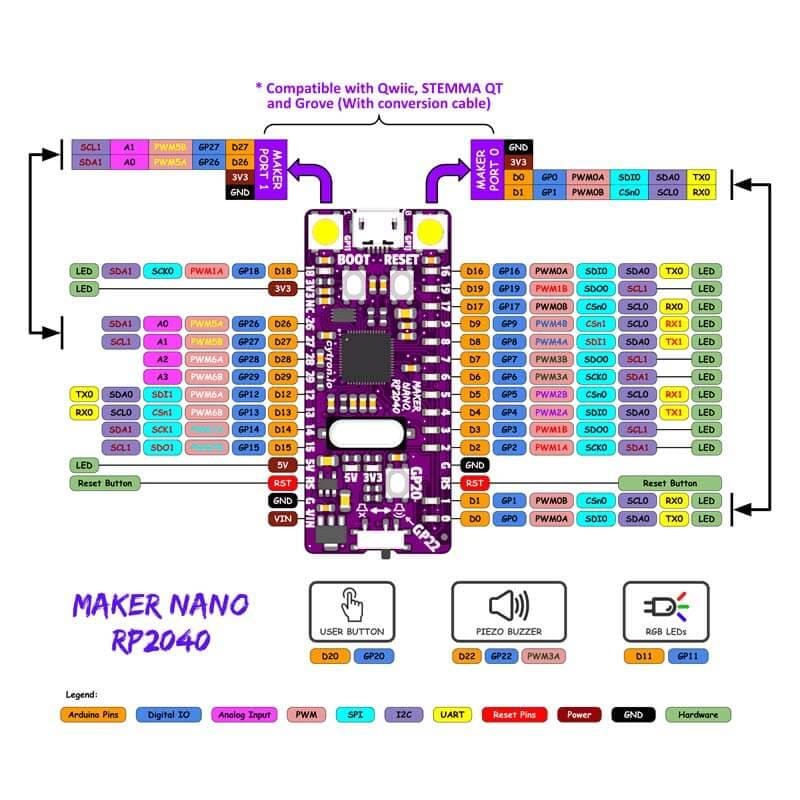
Login / Signup
Cart
Your cart is empty
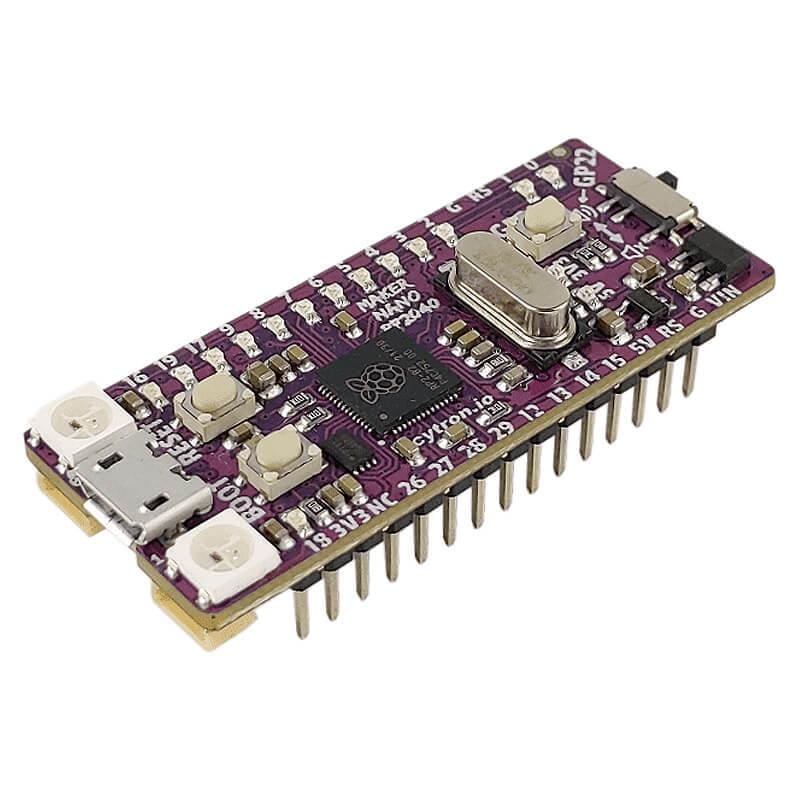
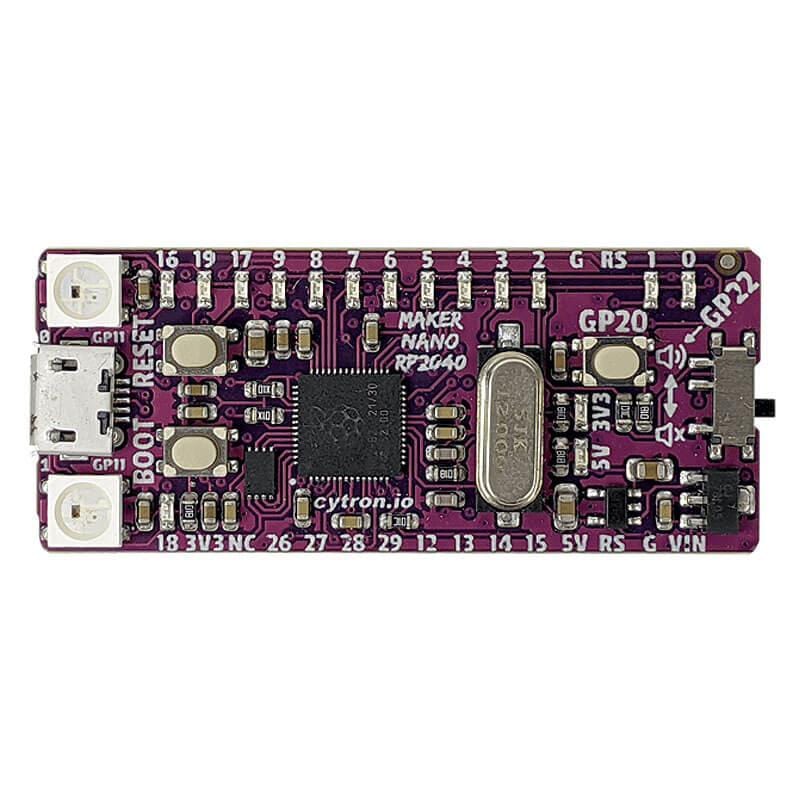
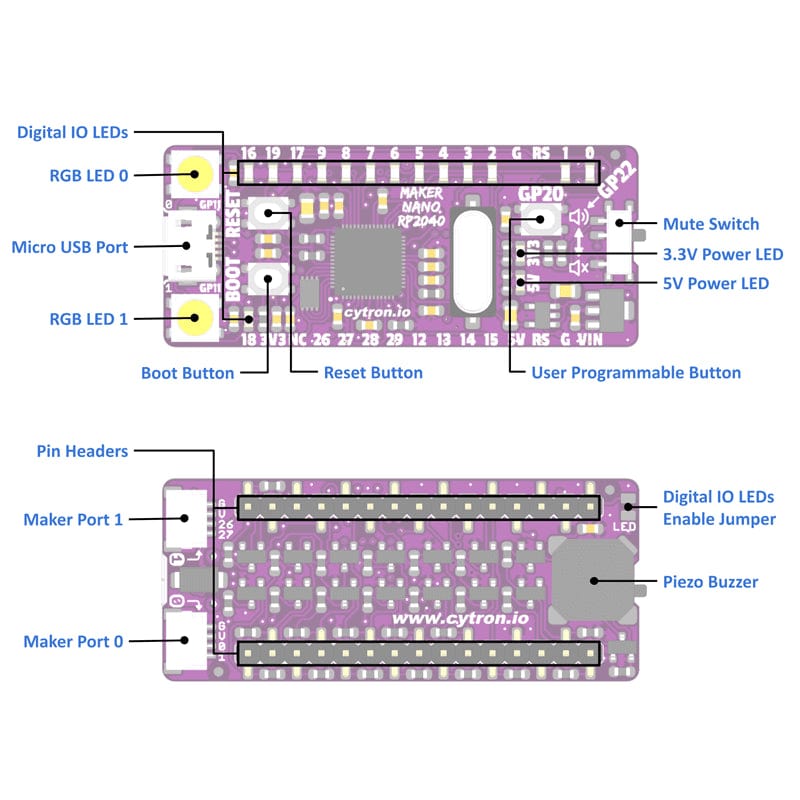
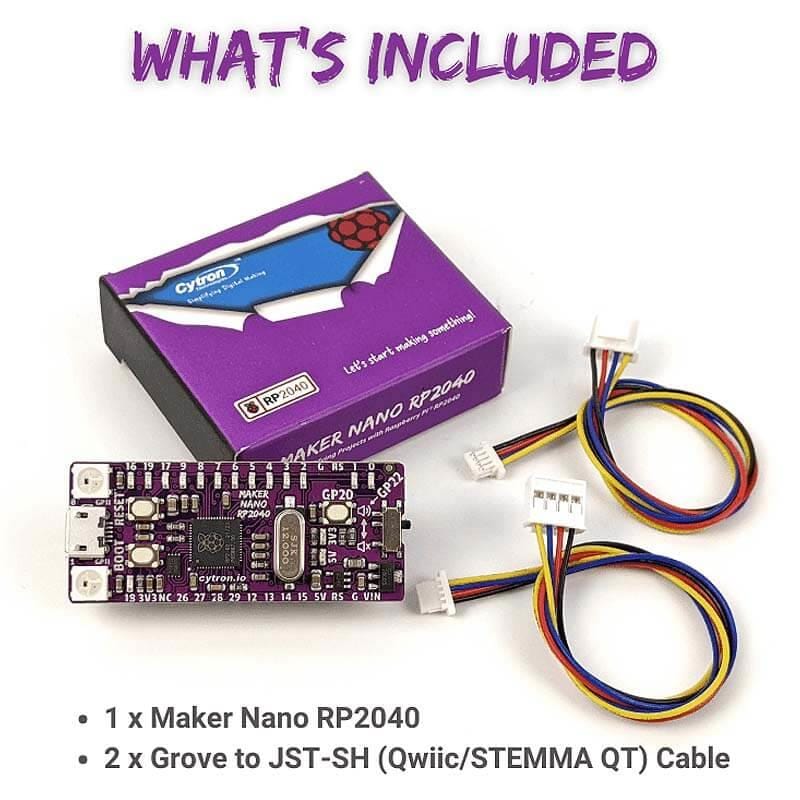
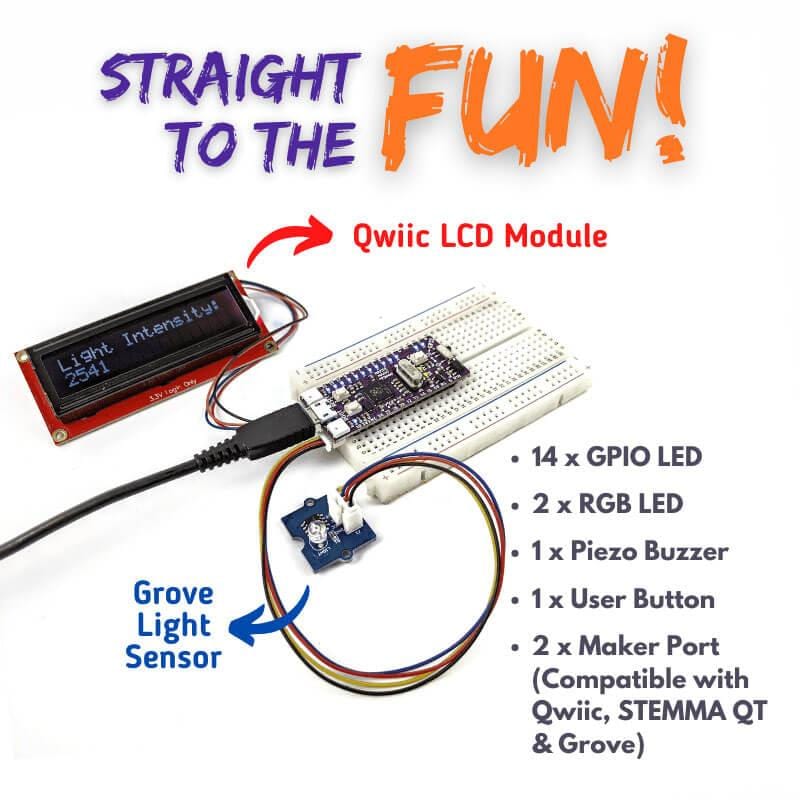
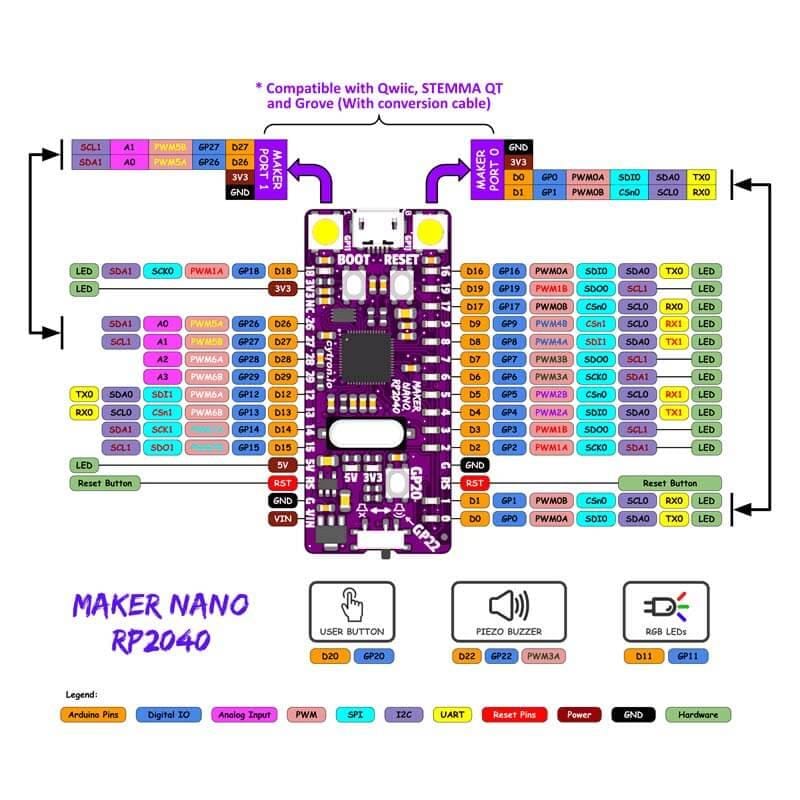
The Maker Nano RP2040 has the same form-factor as the popular Arduino Nano but is powered by the much more powerful RP2040 from Raspberry Pi.
This also means it's compatible with most of the shields available for the Arduino Nano. It's also breadboard-friendly allowing you to prototype your circuit with ease.
The board also includes some great onboard features such as IO indicator LEDs, 2x Neopixel-compatible RGB LEDs, piezo buzzer, a programmable button and two ports compatible with Qwiic, STEMMA and Grove (via included conversation cable).
Note: The IO voltage is 3.3V and it's not 5V compatible. There are only four ADC inputs (A0 - A3) on the Maker Nano RP2040 compared to the eight on the Arduino Nano.
Just like the other Maker series products, there are plentiful LEDs on the Maker Nano RP2040 (well, who doesn't like LEDs?). Those LEDs are not just for a nice visual effect, they also represent the status of each pin and this makes troubleshooting your circuit a breeze.
Not too excited about the single-colour blue LEDs? Worry not! Cytron has also put in two RGB LEDs (WS2812 Neopixel-compatible) to add more colour to your project. You can also program them to dance together with the melody produced by the onboard piezo buzzer. To change to another melody, press the onboard push button. If something goes wrong with your code and the buzzer keeps playing, mute it with the sliding switch.
All of these can be done with the Maker Nano RP2040 alone without additional circuitry. Wiring up your own circuit is always the most tedious part of learning electronics. It's prone to error and sometimes not reversible. We know it because we've gone through that before many times!
When the onboard peripherals are not enough for you, additional sensors or modules can be added via the newly introduced Maker Ports. Utilizing the popular JST-SH 4-way connector, Maker Ports are compatible with Sparkfun Qwiic modules and Adafruit STEMMA QT modules. Qwiic and STEMMA QT use I2C communications and can be daisy-chained. By using the included JST-SH to Grove conversion cables, Maker Ports are compatible with Seeed Grove modules too.
Maker Ports also support UART (Maker Port 0 only), Analog Input (Maker Port 1 only) and Digital Input/Output.
The Raspberry Pi RP2040 can be programmed with C/C++ (Natively or with Arduino IDE support), MicroPython or CircuitPython.
With massive libraries support and examples especially in Arduino IDE and CircuitPython, you will be ready to build your application in no time, be it for learning purposes or for building a useful project.
You may have already seen the original Maker Nano in the store. This table shows the differences between the boards:
| Features | Maker Nano | Maker Nano RP2040 |
| Microcontroller | ATmega328P | RP2040 |
| Language | Arduino IDE (C/C++) | Arduino IDE (C/C++) Micropython CircuitPython |
| Operating Voltage | 5V | 3.3V |
| Digital I/O Pins | 20 | 22 |
| PWM | 6 | 14 (Reassignable Pin) |
| Analog Input | 8 (10-bit) | 4 (12-bit) |
| UART | 1 | 2 (Reassignable Pin) |
| SPI | 1 | 2 (Reassignable Pin) |
| I2C | 1 | 2 (Reassignable Pin) |
| External Interrupt | 2 | 22 (All GPIO) |
| Flash Memory | 32KB | 2MB |
| SRAM | 2KB | 264KB |
| EEPROM/Data Flash | 1KB | - |
| Clock Speed | 16MHz | 125MHz (Default) |
| Power Supply | Vin or USB | Vin or USB |
| Vin Voltage | 7 30V | 7-30V |
| USB Support | USB to Serial (CH340C) | USB host and device |
| Programmable LED | 12x at Pin D2-D13 | 14x at Pin DO-D9, D16-D18 |
| Programmable Button | 1x at Pin D2 | 1x at Pin D20 |
| Piezo Buzzer | 1x at Pin D8 | 1x at Pin D22 |
| RGB LED | - | 2x at Pin D11 |
| Maker Port | - | 2 |
| Dimension | 45.8 X 21.1mm | 49.6 X 21.1mm |







